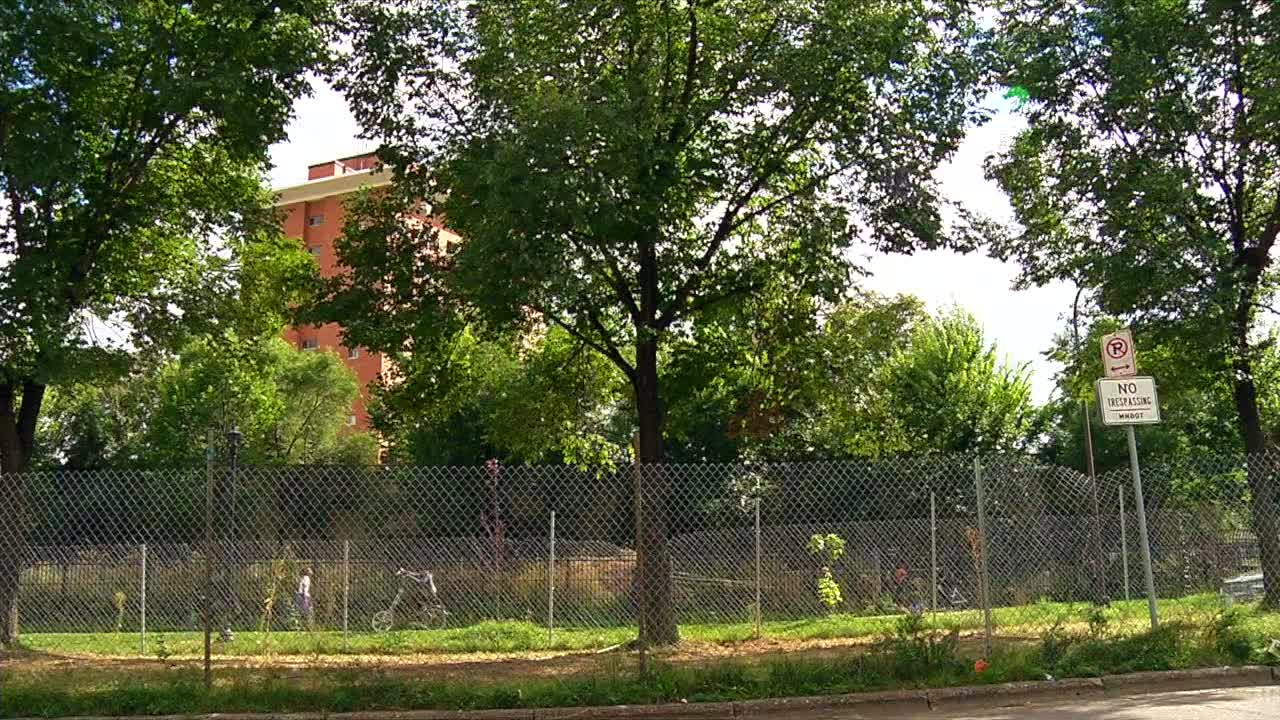Indigenous activist presents his vision to reclaim land for a memorial garden and treatment center
A narrow strip of land along East Franklin Avenue in south Minneapolis is fenced off and overgrown.
Several “No Trespassing – MNDOT” signs are posted in prominent locations throughout the 1.5-acre site.
“Right now we’re looking at a lot of concrete and light poles that we’ve put up here,” he says. “Because they don’t want another camp to be built here.”
But where some see only decay, indigenous activist Mike Forcia sees an opportunity.
“I want this to be a memorial garden for all those we’ve lost to the opioid epidemic that’s affecting our community,” he explains. “We could bring everyone from our community here and sell their beadwork, wild rice and artwork.”
In recent years, at least two camps have been built and cleared here, sometimes referred to as the “Wall of Forgotten Natives.”
Groups of homeless people stand on a nearby overpass and hypodermic needles lie on the ground.
“We’re not dealing with homelessness and addiction,” Forcia explains. “Go under that bridge, there are at least a hundred people there right now, and the homeless shelter is right there, 30 meters away.”
Forcia says he contacted MnDOT in hopes the agency would hand over the property to the Native American community.
In a statement, MnDOT said it was open to the proposal and was currently reviewing the idea with tribal organizations and local government.
“You know, I’ve lost quite a few friends because of this,” says Sanchez Brown. “It’s heartbreaking.”
Brown says she herself has struggled with a substance use disorder.
She hopes the memorial or garden could be the beginning of something new for the area.
“I think that would be nice to see,” Brown says. “I would actually like to see a lot more buildings remodeled in Franklin and things like that.”
But Forcia also wants a property behind East Phillips Park.
He calls the proposal to repurpose the 2.6-hectare park, including the gymnasium, the “Red Road Village Plan.”
“If we close the camps now, we could use this place as a navigation center,” says Forcia. “Similar to what we did at the Red Lake residence a few years ago.”
He envisions a treatment center and accommodation in the gymnasium for the homeless.
The plan would include a small residential village with culturally oriented wraparound services, including addiction treatment and job placement.
However, the bar seems to be set high for the Red Road Village project.
A spokesperson for the MPRB points out that East Phillips Park is a thriving neighborhood park that is part of a master planning project.
She says to sell the land, the board would have to determine the property is no longer needed as a park and a county judge would have to approve the sale.
This is stated in the charter of the city of Minneapolis.
But Forcia says he will continue to support both projects.
“We’re not asking the city for money, we’re not asking the parks department for money,” he says. “We’re demanding the land back. As soon as you give us the land back, we’ll take care of our own people.”

